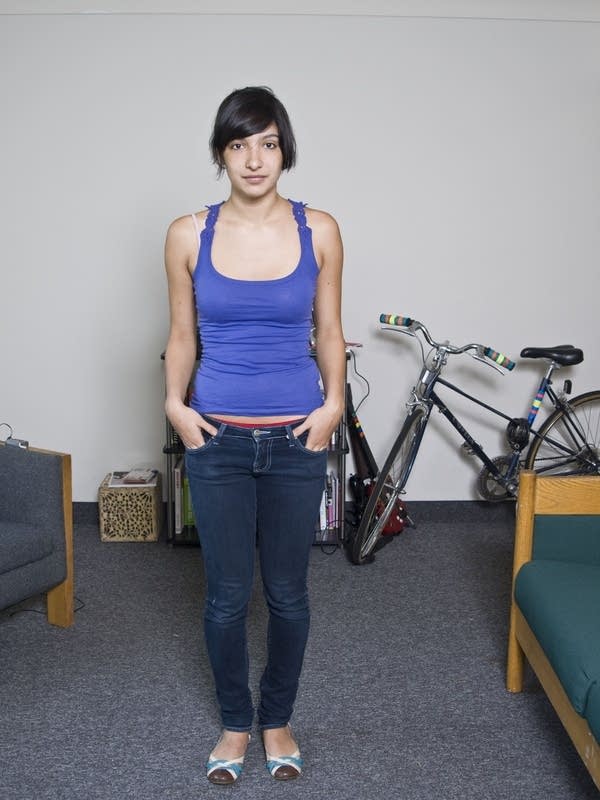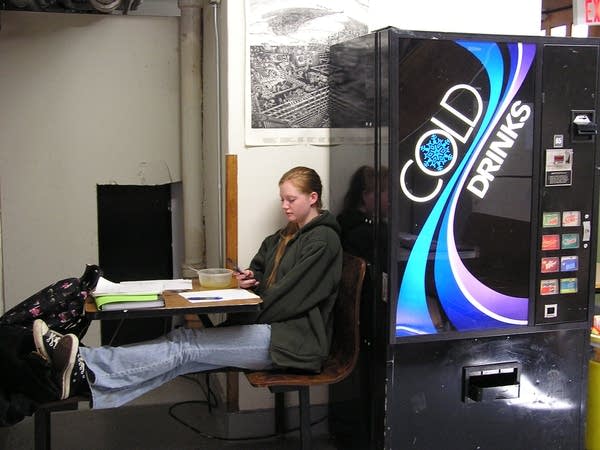Arts colleges face unique challenges in a recession

Carla Rodriguez is a photography major at the Minneapolis College of Art and Design. She's from Texas, where her mom works as a beautician and her dad's a personal trainer.
"I'm the first to go to college out of my family, and I'm going to arts school, of all places!" laughed Rodriguez. "And it's an expensive school."

An education at MCAD costs more than $28,000 per year. That doesn't include room and board, or the hundreds of dollars Rodriguez must spend on art supplies. She says every day she worries whether her arts education will pay off.
"I'm thousands of dollars in debt right now, and nine months after I get out of school I'm going to have to start paying this back," said Rodriguez. "Am I going to have a job that's steady enough to start doing that?"
Create a More Connected Minnesota
MPR News is your trusted resource for the news you need. With your support, MPR News brings accessible, courageous journalism and authentic conversation to everyone - free of paywalls and barriers. Your gift makes a difference.
This past fall MCAD saw a drop in enrollment, as did about one-third of the schools in an association of art and design schools that MCAD belongs to.
Admissions Director William Mullen says part of MCAD's 5 percent drop was by design, but he expects to see another drop in the coming academic year.
Mullen says even in good economic times, art schools are under pressure to prove to parents that an arts education will prepare their students to find a job in the real world.

"Some parents will look at this and say, 'Yes, this kind of education is the future.' Other parents will look at this and think, 'How do you go to college for four years and just paint pictures? How do you earn a living painting things?'" said Mullen.
"They don't understand the breadth of what we're doing here, and that's really one of the things we try to communicate in this office is that, no, you don't come here to paint for four years. Some students do -- most don't."
Mullen points to the school's work in the areas of design and communications.
Tamara McCoy is a junior at MCAD. She's getting a bachelor of science degree in marketing, branding and public relations.
McCoy thinks attending arts school is a better choice for her than some other liberal arts institutions. She cites Daniel Pink, the author of "A Whole New Mind," when she says her education is preparing her for a new economic reality in which creative thinkers will be the ones who get ahead.

"It's not really preparing us for one specific job," said McCoy. "It's really giving us the tools and skills that we can apply to a number of jobs. We're just learning these creative and critical skills that will be applicable in so many ways. And it just depends on us creating our own adventure, if you will, with the skills they're handing us."
Even if the economic recession convinces some students to make what may feel like a more practical choice where to go to school next fall, MCAD admissions director William Mullen says they'll probably eventually end up at an arts school.
"Thirty-five percent of our students are transfer students," said Mullen. "A lot of them go to the university or some other school ... and they'll major in something else and say, 'You know what, that's not me. I need to go to an art college.' That's very, very common."
While admissions departments are waiting to see whether enrollment will drop this coming fall, they do expect an increase in applications.
Admissions officials say students are likely to apply to more schools this year, to see which school will give them the best deal.
